Purposeful Internship: How to Choose an Internship?
As the internship season approaches, job portals fill up with internship offers, social media feeds flood with attractive advertisements, and career fairs buzz with dozens, if not hundreds, of potential employers. The abundance of opportunities is undoubtedly positive, yet navigating through this sea of offers can prove to be an unexpectedly big challenge, making the choice itself a skill to be mastered. Below, I highlight four considerations to keep in mind when choosing an internship.
Quality over Quantity
I have observed how students sometimes try to secure an internship through mass applications, sending out the same documents in bulk and hoping, somewhat naively, that something will stick. Unfortunately, such a company-unspecific approach often means losing out to candidates who have invested time in research and made deliberate choices. Therefore, select the opportunities that truly resonate with you. Once this is clear, you can direct all your energy, time, and focus on those applications, which increases your chances of standing out.
An Internship Is a Two-Way Relationship
The process of choosing an internship is not one-sided – companies and organisations are not just choosing you; you are also choosing them. That is why it is important to research the place you are applying to. At first glance, words like values, mission, vision, or culture may seem like popular buzzwords. But upon deeper exploration, they can guide your choice, helping you distinguish between offers that genuinely appeal to you. For example, when applying to META, impressions and experiences of past interns, as well as introductions to the company’s culture, were easily accessible on its website and social media. Such preparation also helps to set your focus during the busy application period and to use your energy deliberately to secure an internship from among your choices.
An Open Mind as a Driving Force
It may sound like a cliché, but even if you already have a specific goal or interest in mind, it pays to remain flexible when selecting an internship. My first internship was in the public sector, as it suited my studies in public administration. Still, it was in a niche field with high entry barriers, where I had no prior experience and little knowledge. Thanks to keeping an open mind, I gained insight into an exciting new area while still working on tasks that aligned with my interests. What was initially planned as a four-week internship smoothly evolved into a four-month commitment. Nowadays, fields are so interconnected that ending up in a seemingly unfamiliar sector may not be a step in the wrong direction. On the contrary, it may provide better opportunities than expected, confirm your interests, or even open entirely new paths.
Curiosity and Initiative Compensate for Shortcomings
Young people often feel that their lack of experience is a limitation. In reality, at the start of a career, the most valuable assets are initiative and a willingness to learn. I carry with me the advice once given by an experienced Estonian mid-level manager: “Skills can be easily taught and acquired, but changing a person is difficult.” To gain the chance to prove your ability to learn, it is essential not to forget to be active outside your studies as well, since those experiences, combined with sincerity, drive, and ambition, can be decisive. Don’t underestimate yourself – dare to dream and choose an opportunity that inspires you, even if you feel you are not (yet) fully ready. Previous active engagement, paired with curiosity, helps bridge any knowledge gaps.
Choosing an internship is a process that requires focus, openness, and a willingness to dig deeper. Amid the abundance of opportunities, it is vital to make a well-considered choice, because an internship is not merely about fulfilling a curriculum requirement – it marks a purposeful first step in the beginning of a career journey.
.
Artificial Intelligence Is Launching the Golden Age of PR
The rapid development of artificial intelligence has raised doubts about the sustainability of many professions – including the role of PR professionals. While it’s inevitable that increasingly sophisticated AI will eventually replace a large share of junior-level positions – jobs that today mostly revolve around research and writing – it would be premature to declare the entire field doomed. The opposite is true: the more widespread AI becomes, the greater the responsibility and workload that falls on communications professionals.
There are many reasons for this, but two closely connected factors stand out. In an era of mass content creation and information noise, strategic messaging and strong media relations skills are more important than ever. At the same time, in a world where ChatGPT is emerging as a serious competitor to Google, the value of earned media is higher than it has ever been.
In the age of AI, earned media is no longer just a tool for sales, reputation-building, and gaining public trust. Large language models like ChatGPT, Perplexity, and Claude draw their knowledge primarily from public sources – news articles, social media, and trusted outlets such as Wikipedia, industry directories, and similar repositories. The more frequently and credibly a company is mentioned, the more likely it is to surface in AI-generated recommendations and responses.
Large language models like ChatGPT, Perplexity, and Claude draw their knowledge primarily from public sources – news articles, social media, and trusted outlets such as Wikipedia, industry directories, and similar repositories.
This matters even more given how quickly people are adopting AI tools for search.
According to an AP-NORC survey, 60% of American adults already use AI for information searches, with that number climbing to 74% among those under 30. Adobe Express research shows that 77% of U.S. ChatGPT users primarily treat the platform as a search engine, and a quarter of them prefer it over Google. This means that an ever-growing share of initial information gathering happens within AI ecosystems – if your brand isn’t visible there, it risks being invisible to much of your target audience.
Content Alone Isn’t Enough
And this brings us to the second point. While ChatGPT and other tools can, with some human support, produce publishable content – press releases, opinion pieces, posts – that alone isn’t sufficient. Communication isn’t just words in a Word document. It’s also about where you’re visible, who you’re visible to, what messages you convey, why you convey them, and how you reach that visibility.
AI can only support part of this process. In a small market like Estonia, industry-specific expertise is irreplaceable. And when it comes to actually securing coverage, the role of a PR expert with a strong, trusted network is indispensable. An AI can draft the perfect opinion piece, but if it doesn’t know where, how, and to whom it should be pitched, the piece will go nowhere.
Consistency and long-term strategy also can’t be overlooked. Trust doesn’t appear overnight – not among the public, and not within AI tools. To make a lasting impression with your name, story, and ideas, you need sustained, thoughtful effort. That requires market awareness, trend forecasting, the ability to think several steps ahead, and a sharp sense of what truly matters.
The approach to communications must be strategic. Practitioners need to understand real business needs, identify opportunities, and prevent problems. Adapting to AI tools is one part of this, but never the whole story: long-term reputation building, supporting the right narratives, and aligning with broader business strategies remain critical.
Communication isn’t just words in a Word document. It’s also about where you’re visible, who you’re visible to, what messages you convey, why you convey them, and how you reach that visibility.
Quietly in the Shadows
All of this explains why the role of PR professionals will not shrink in the age of AI; it will expand. Communications is becoming an even more business-critical strategic function, with direct impact on a company’s visibility both to people and to algorithms. The arrival of AI inevitably changes what our work looks like, but those changes are positive: less routine “manual labour,” more big-picture thinking, contextual awareness, networking, and strategy.
If PR work were only about drafting articles, then yes – people in the sector would need to start looking for other careers. But the reality is that communications work goes far beyond content creation and filling social media calendars. It is a strategic function, and its importance will only grow in the coming years: since anyone can now produce decent content, what truly matters is standing out with the right messages, in the right channels, at the right time.
Fail to do that, and you risk fading into obscurity – both in the eyes of the public and in the increasingly influential AI tools shaping information discovery.
Five Ways to Ensure Your Company Shows Up in AI Tools
Be visible in trusted media
AI tools prioritise sources considered authoritative. Aim to appear regularly in quality media outlets through articles, interviews, and expert commentary. Even unlinked mentions help algorithms remember and surface your brand.
Get listed in industry directories and rankings
Identify respected comparison portals, business directories, or professional association databases in your sector, and create detailed profiles. Add case studies, showcase work, and collect client feedback.
- Optimise your webside and blog
A well-structured website and informative blog increase visibility in both traditional search engines and AI-powered results. Content should address audience questions, be relevant, and provide value.
- Create and maintain a Wikipedia page
Both international Wikipedia and the local Estonian Vikipeedia are trusted sources for AI. Follow platform guidelines, cite reliable media sources, and update content regularly.
- Stay active on social media
Consistent and relevant activity on social platforms keeps your company visible, expands search reach, and creates additional signals for AI systems to factor in.
The Rules of the Digital Age: Why a Smart Brand Can’t Afford Summer Silence
Year by year, there are fewer and fewer reasons to exclude summer from your communications plan. Digital media has changed the way people consume information to such an extent that staying silent in summer no longer signals a strategic pause, it means giving away visibility to a more active competitor.
Just five years ago, the common belief was: “Don’t try to push positive stories to the media in Summer; they’ll go unnoticed. People don’t consume media during summer.”
But the rise of digital media has shifted this. 91% of Estonians consume news on mobile devices. News reaches people everywhere: on the beach, in the forest, or on public transport. Summer no longer puts media consumption on pause. Only the way people consume information changes.
Today’s PR is about delivering the right content at the right time and place to the right audience. This no longer happens solely through a newspaper article or press release. The same story might reach someone through a social media platform, a community group or even an influencer. Summer is the best time to convey your brand’s message.
Be Where Your Client Is
As a communications agency, our first question to clients is: “What are your clients hiring you for?” That’s the core from which all meaningful action and visibility-building begins. People don’t choose brands because they’re loud, beautiful or active.
They “hire” brands to solve specific challenges in their life or work: to make decisions easier, provide confidence, bring clarity, spark ideas or improve their mood. If you know who your clients are, what you solve for them, and when they’re ready to listen, you won’t have “silent months” in your annual calendar. For many brands, summer can be one of the most effective periods to stand out: with less noise, more space, and a more receptive audience.
“Less noise, more space and a more receptive audience”
When You’re Present, You’re Remembered
When work pace slows and calendars open up, people start looking around. They reevaluate service providers, seek new solutions and shape new consumption habits. This is the moment when a brand can position itself meaningfully and calmly: without noise, but with purpose.
“A brand that understands its target audience also consumes content in summer, knows that vacation doesn’t mean needs disappear. It just means the environment is different. The same brand knows how to adapt its communication to this new environment.”
A Brand That Goes Silent in Summer Loses More Than Media Coverage
The best agencies build summer content packages, pitch season-appropriate stories to journalists, help leaders stay active on LinkedIn and involve influencers who convey the message naturally to consumers.
Marketing and executive leaders who understand that PR is not a seasonal campaign but a continuous trust-building effort use summer strategically. When most competitors go quiet, it’s easier to garner media attention: there’s more room for your message to be seen and a greater chance of being remembered.
Whom Do People Trust? Influencer Marketing Is More Than Just a Trend
Influencer marketing has become one of the most effective and fastest-growing sectors in today’s digital landscape. Brands that want to build a stronger connection with consumers are no longer relying solely on traditional advertising – they’re partnering with content creators who have loyal, trusted followings. Why build a new community from scratch when someone else has already worked hard?
Emily Hund, a researcher at the University of Pennsylvania and author studying influencer culture and digital media, notes that people often trust influencers more than journalists, and increasingly turn to them for news and information. A recent public opinion survey commissioned by the Estonian Government Office found that social media is the mostimportant information source for people living in Estonia who belong to other ethnic backgrounds. Estonian news portals came in second. Ethnic Estonians also use social media for news, but for them, it ranks fourth. This, however, is gradually shifting.
In the age of social media, people don’t want to see just advertisements – they’re looking for content they can relate to, or that offers enough context to help them make decisions. That’s the power of influencer marketing: it creates real, trusted connections between brands and audiences. For example, when Gen Z considers buying an expensive product, they’re more likely to research reviews from influencers on social media than to read a journalist’s article. On the other hand, people over 65 still primarily get their information from traditional journalism. Successful influencers often carve out a niche and communicate authentically, earning greater trust from their followers.
Three Reasons Why to Include Influencers in Your (PR) Campaign:
- Credibility and authenticity – People trust influencers because they perceive them as “real people” who share their everyday lives and personal experiences.
- A sense of community – Influencers foster tight-knit communities where followers interact and feel part of something bigger. In many cases, an influencer’s community is larger than the circulation of a national newspaper. For instance, a campaign we ran last summer reached nearly 40,000 people through influencer content. By comparison, one of Estonia’s top newspapers, Õhtuleht, had a circulation of 29,400 that same month.
- Natural brand integration – Unlike traditional ads, influencer marketing feels more organic. Content creators share products in the context of their real lives, making the message more believable. They can also be involved in PR initiatives and generate earned media. A smart influencer post can spark media coverage or even kick off the public conversation.
Influencer Marketing Is More Than a Passing Fad
While sceptics may still see influencer marketing as a fleeting trend, the data tells a different story. Brands that invest in long-term partnerships with the right influencers are building a powerful communication tool. But it’s crucial to choose wisely – an influencer must align with the brand’s values and audience. Simply going after high follower counts without evaluating content and tone can backfire, alienating both the influencer and their community.
Influencer marketing isn’t just about social media – it’s a strategic communications tool. When brands effectively incorporate it into their overall strategy, it becomes not just powerful but essential for modern marketing success.
Key Trends in Influencer Marketing
Influencer marketing continues to evolve rapidly, but several trends are standing out:
1. Micro and Nano-Influencers
While mega- and macro-influencers can reach large audiences, smaller influencers often see higher engagement. Their recommendations feel more personal and trustworthy. That’s why it’s important to carefully evaluate which influencer best suits your brand.
2. Long-Term Collaborations
One-off campaigns can feel like ads. In contrast, ongoing collaborations build trust between the brand and influencer. Consistent messaging strengthens the connection and makes the brand more believable to followers.
3. Authenticity and Transparency
Consumers are more media-savvy than ever and expect honesty from both brands and influencers. Clear labels like “Paid partnership” or visible brand tags help audiences identify sponsored content and maintain trust.
4. Integration of Social Media and E-Commerce
Social media platforms are becoming integrated shopping hubs where purchases happen directly. Instagram, TikTok, and YouTube now offer in-app shopping tools, making influencer marketing even more impactful.
Meta Advisory is Estonia’s Communication Agency of the Year 2025
Once is chance, twice is coincidence, three times is a pattern.
Meta Advisory has been named Communications Agency of the Year for the third time. Our Managing Partner, Andreas Kaju, shared his thoughts with the Estonian Marketing Association (TULI) on winning, agency life, and the bigger picture. Here are some highlights from the interview.
Meta wins Communications Agency of the Year for the third time. This time, you took home gold, two bronzes, and a special egg. How do you feel about the result?
I look at it from several angles. The number of Golden Egg awards we win doesn’t define whether a year was successful. We’re a business. The main measure of client trust is revenue. That’s our primary capital.
We did all right. We can’t do better than our clients do. But there’s no point in dwelling on last year – the past is the past. We live in tomorrow. The global climate of uncertainty is affecting our clients, too.
No clients have left in recent months, and none are planning to. But nobody’s taking big investment risks either. Deal flow has frozen. There are no major mergers or acquisitions happening, projects that typically bring us work. And there are no new international companies entering Estonia (although, full disclosure: between the interview and its publication, Meta landed a project with a European manufacturer planning production in Estonia).
Given that we managed to grow despite war and geopolitical turmoil, I’m satisfied. Any sane person would be. But it takes a lot more effort than it used to. Work used to come easier.
What’s the broader impact of the technological revolution on society? There’s talk that everyone needs to learn to “prompt”, but realistically, not everyone will. Many jobs may disappear. What then?
Jobs won’t disappear altogether, but half the people working in the field today will lose theirs. The work will go to people with tech skills. Those without will fall behind.
There will be less demand for people who want to be paid too much for doing basic tasks. Every wave of new technology has shown that overall productivity increases.
Sure, there’s social injustice in that. Younger people will have an advantage – it’s more intuitive for them. Older generations will have to learn more.
But I believe we need smarter, sharper people, and for our field, that’s a good thing – the bar gets higher.
Crucially, learning can’t be left entirely to individuals. My partners and I are responsible for ensuring learning happens. We have training plans. I personally run internal seminars. And as part of Europe’s largest strategic communications group, Rud Pedersen, we have a company-wide professional development program.
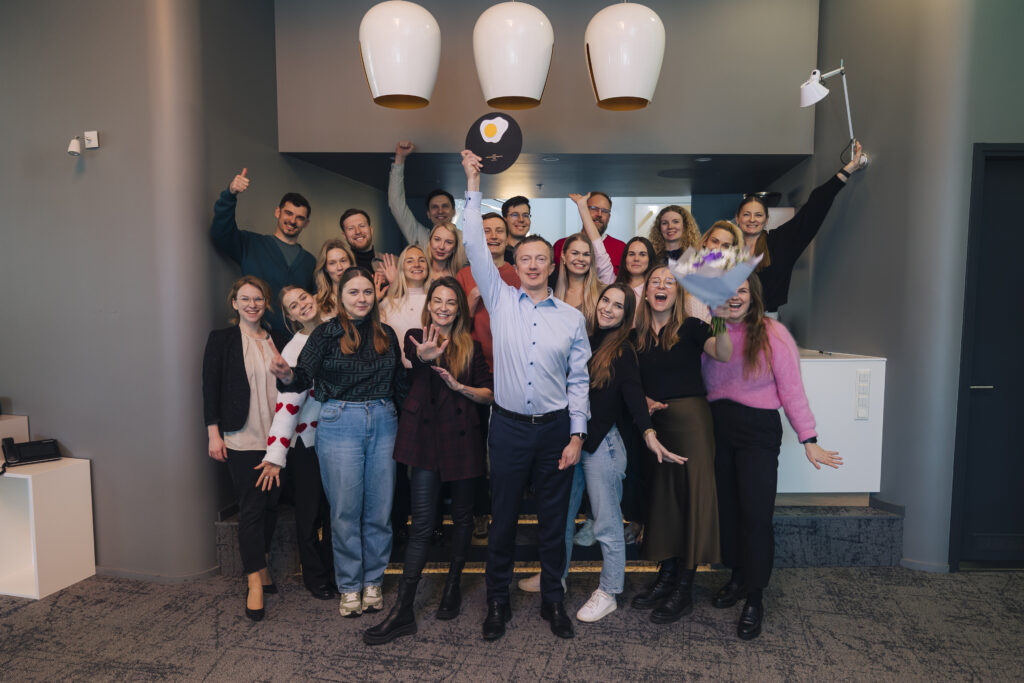
Does this industry require more focus on mental health than others? And are we doing enough?
I don’t know if it’s specific to our industry, but it probably applies to the entire advisory sector. Things move fast. We live in a time of upheaval, and client stress inevitably spills over to us. That puts people in companies like ours under serious pressure, and that gives us a special responsibility to look after mental wellbeing. Years ago, in cooperation with Peaasi, we conducted our first mental health survey and added private health insurance for everyone.
As leaders, we can’t kid ourselves. Throwing champagne parties, adding a ping-pong table to the office, or organising padel outings isn’t mental health care.
Caring for mental health means managing workloads, being aware of whether people are coping, and offering support from more experienced colleagues when needed. You can’t do that without staying closely in tune with people’s work lives. It takes active leadership.
A leader needs to know when someone’s struggling. And employees must hold leaders accountable for that. This doesn’t mean the culture needs to go soft. On the contrary, our internal culture is demanding and performance-focused. But it needs to feel safe at the same time.
Leadership is an art that now requires more thought than ever. You can’t just tell people in a meeting that we need more clients and expect that to work. That kind of company won’t survive.
There are four of us on the leadership team. We’ve all had to level up, and we’ll keep doing so. When I talk about learning, the biggest responsibility is on us.
From the employee’s point of view, they expect to grow and to see a future for themselves. At the end of the year, they should feel like they’ve gotten better. That’s what we work toward systematically.
To wrap up – back to the Golden Egg. In your acceptance speech, you said you didn’t care much about awards in the beginning. But that changed?
For the first seven years, we didn’t enter any work into the Golden Egg Awards competition. It didn’t seem important. Honestly, I was a bit dismissive. A founder and CEO needs to have strong self-belief and confidence in what they’re building. Yes, I looked at the sector with a bit of arrogance.
I still think we do things differently, but now I see ourselves more as part of the sector. How well we do also depends on how strong the overall standard is. If clients thought the whole industry was weak, that would affect our pricing power too.
Since clients often see this category as a low-value or interchangeable service, like it doesn’t matter what brand they choose, it’s our job to show that it does matter. And that’s not a battle we should fight alone.
That’s why I’ve come to value collaboration and contact with other agencies more. It’s a shared fight for quality. The Golden Egg Awards are part of that. Raising and maintaining the standard isn’t an abstract or moral issue – it’s a very practical one.
And of course, I saw how much recognition meant to my colleagues. When you don’t win, or win less than you hoped, you feel it. But that’s part of the deal. To truly feel joy, you have to experience the sting of loss. The Golden Egg helped us realise how important recognition is to people, and we take it more seriously inside the company now, too.
Read the full interview from the TULI website.
GALLERY
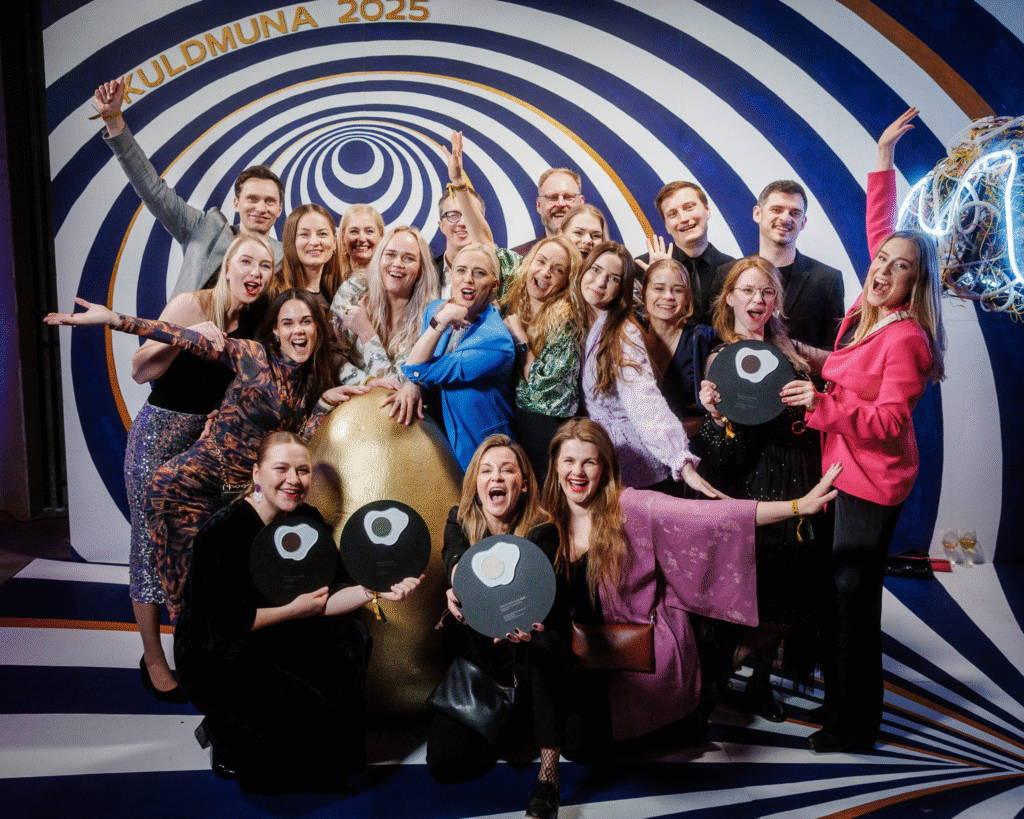
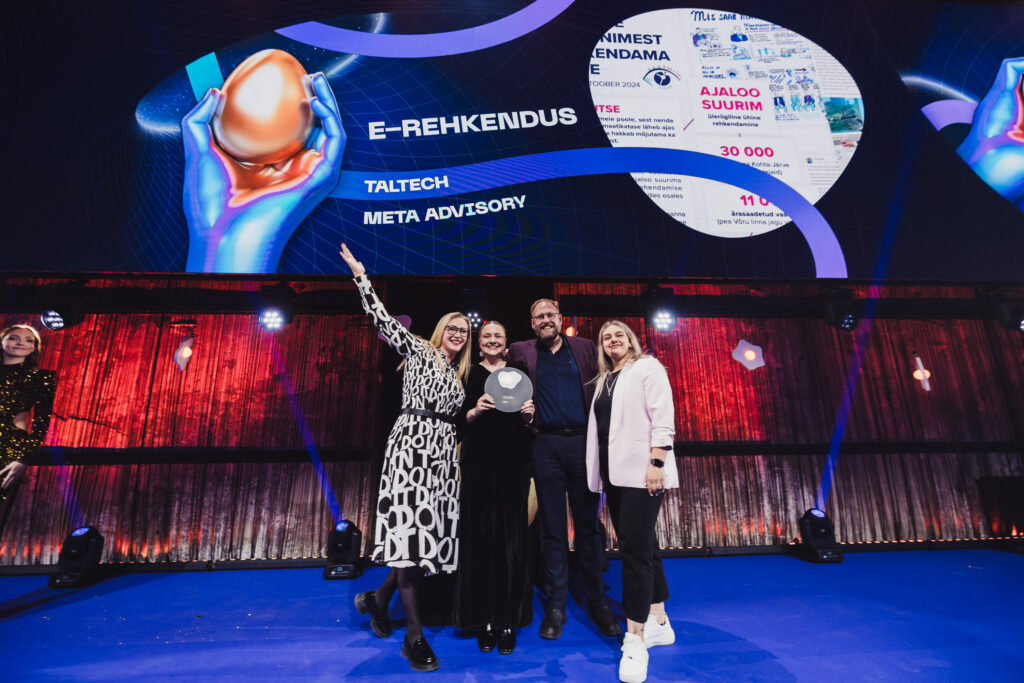
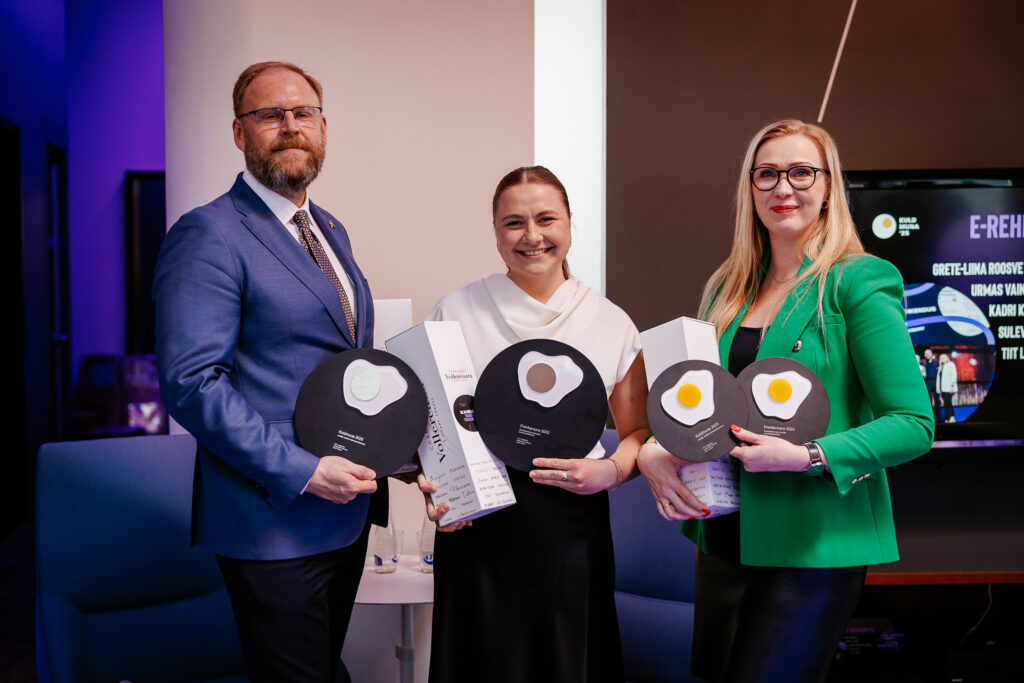
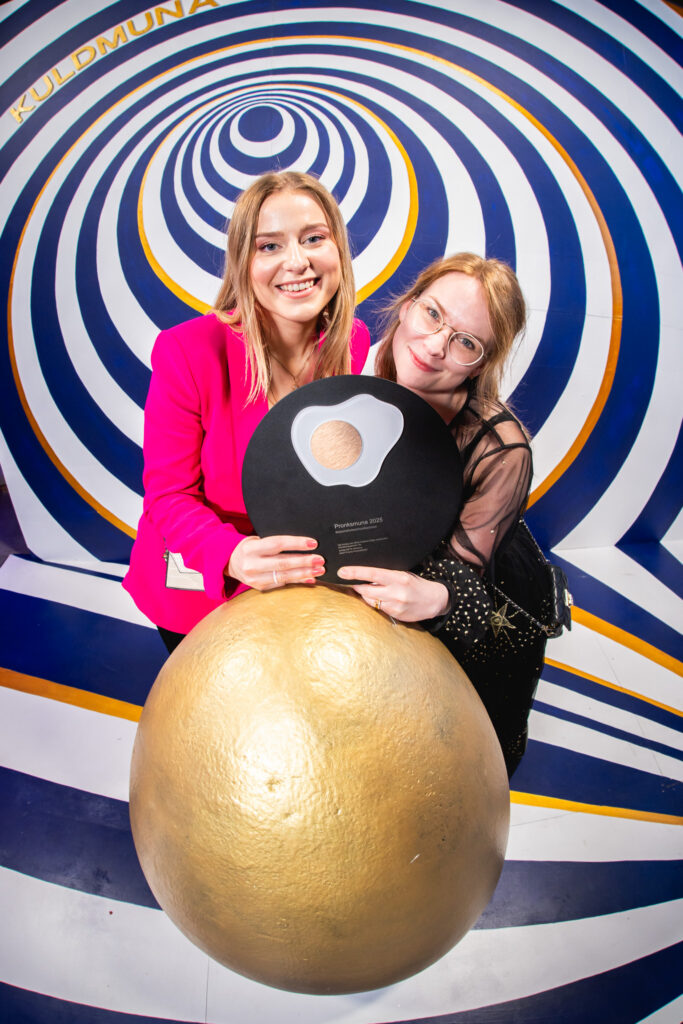
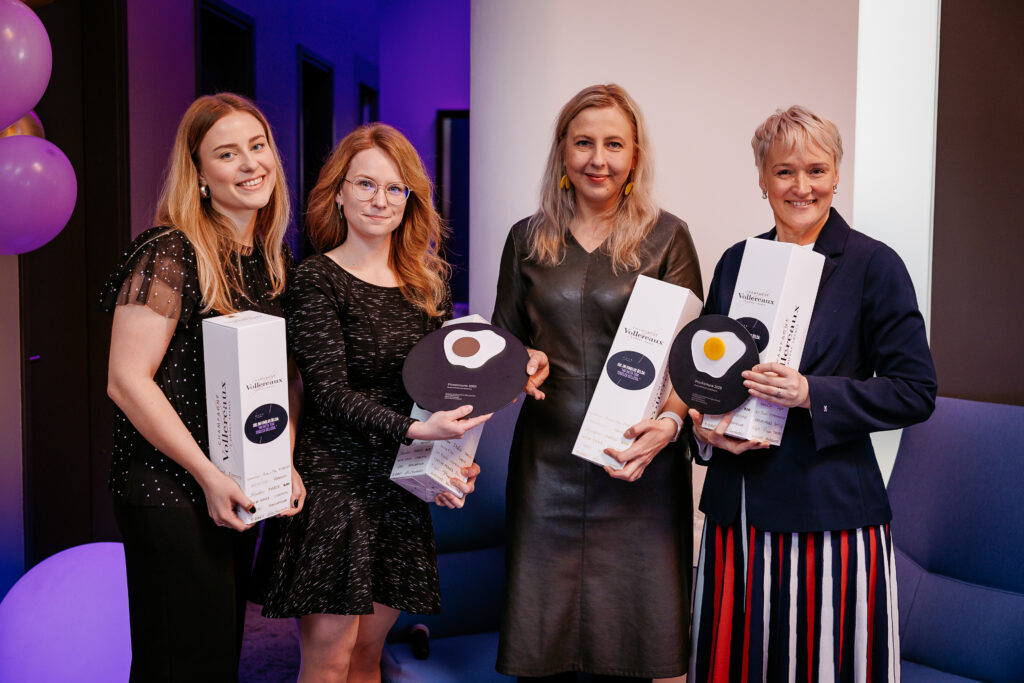
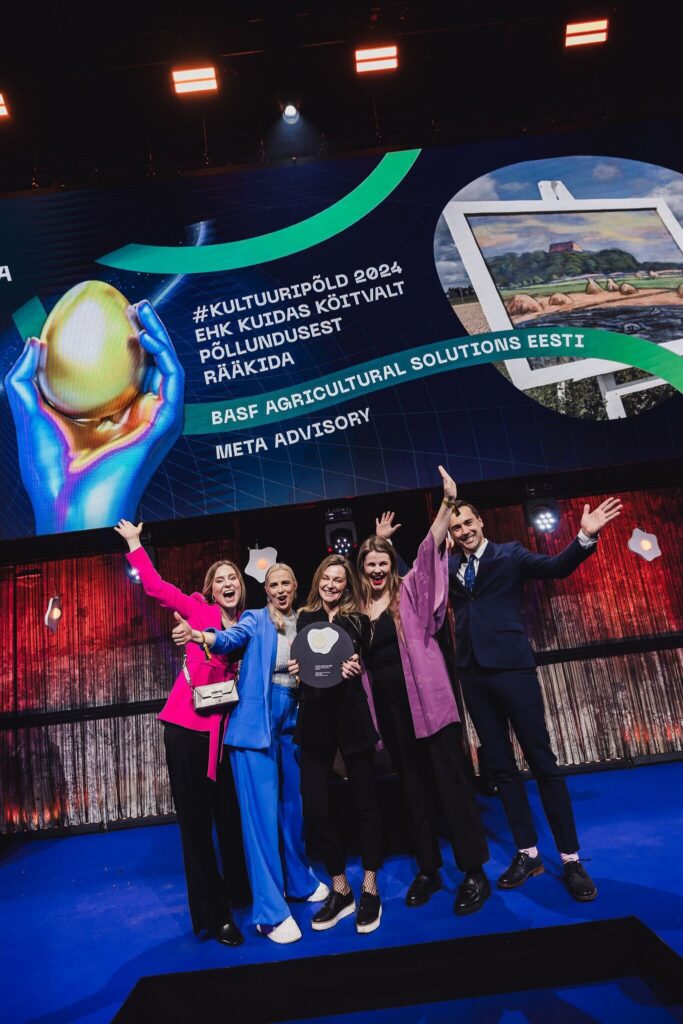


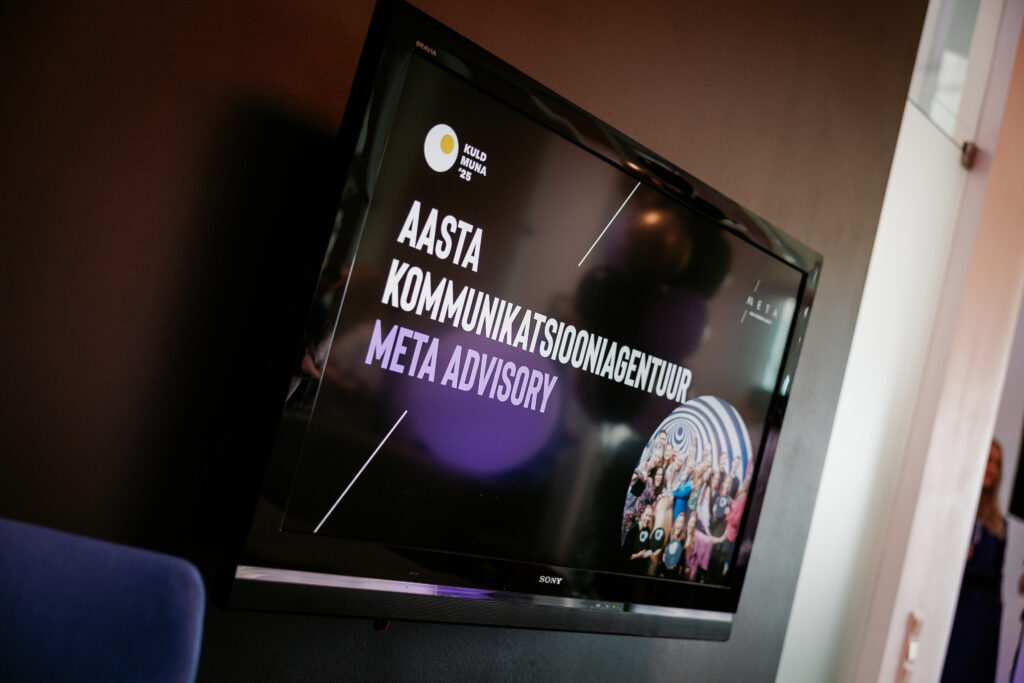
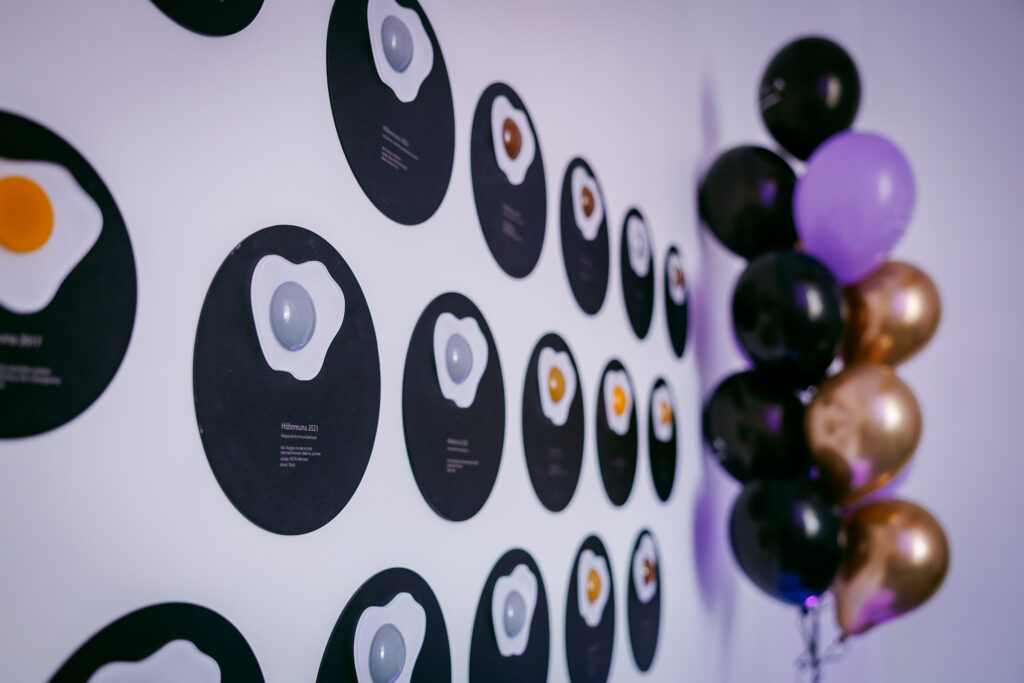
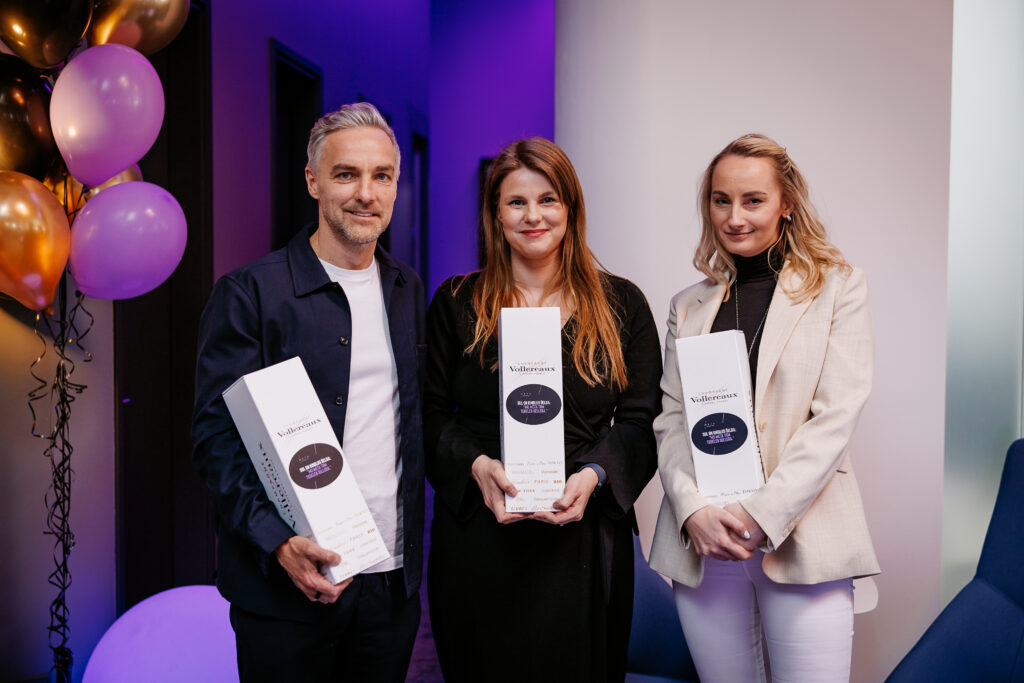
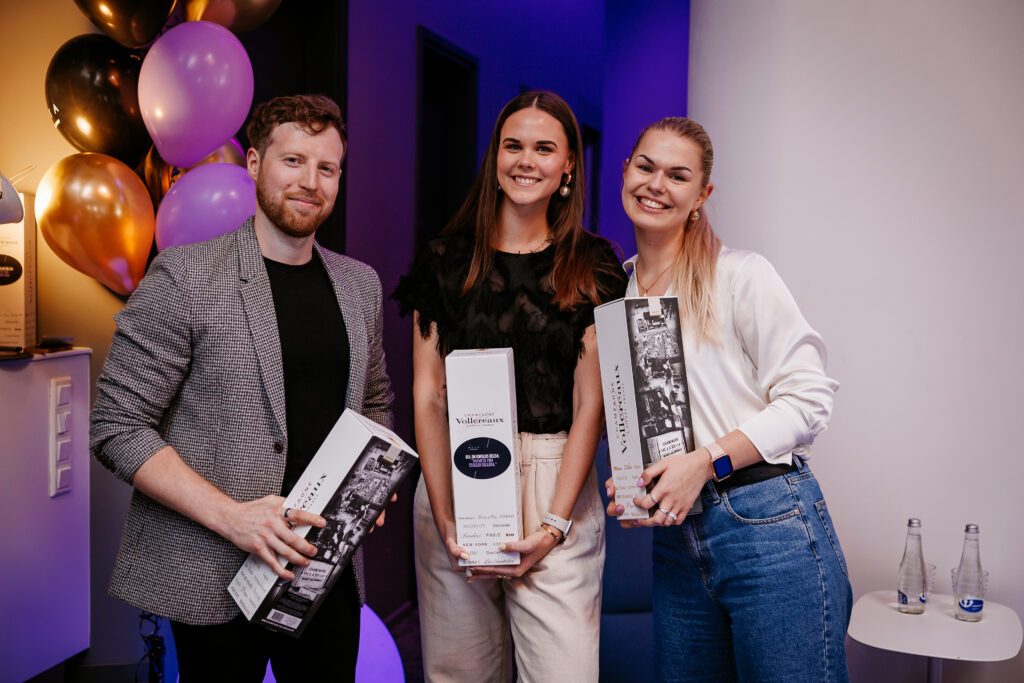

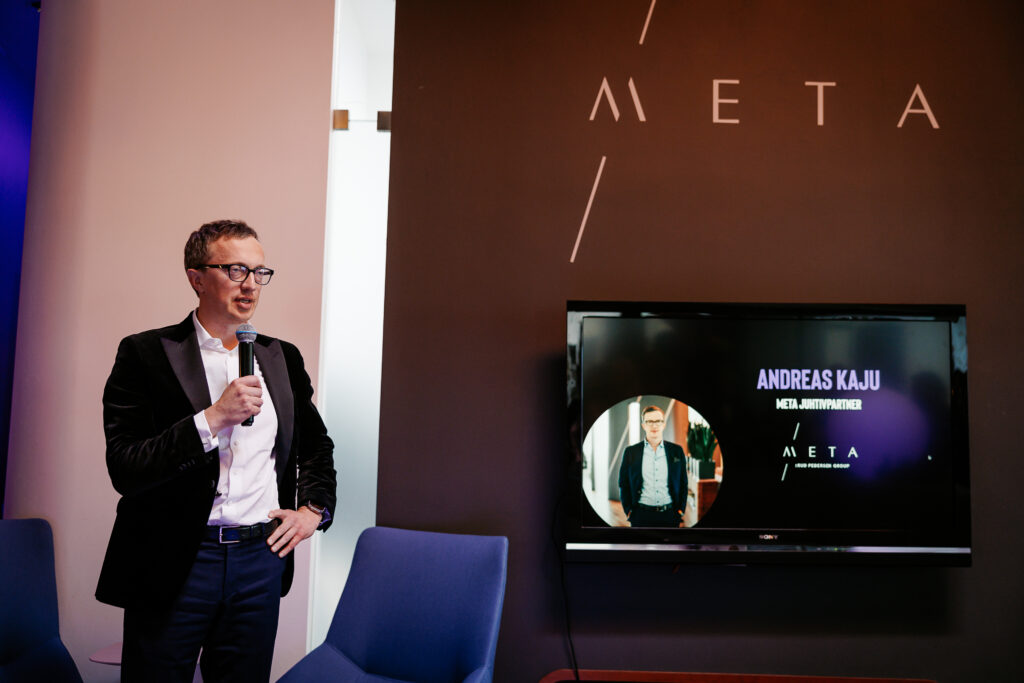


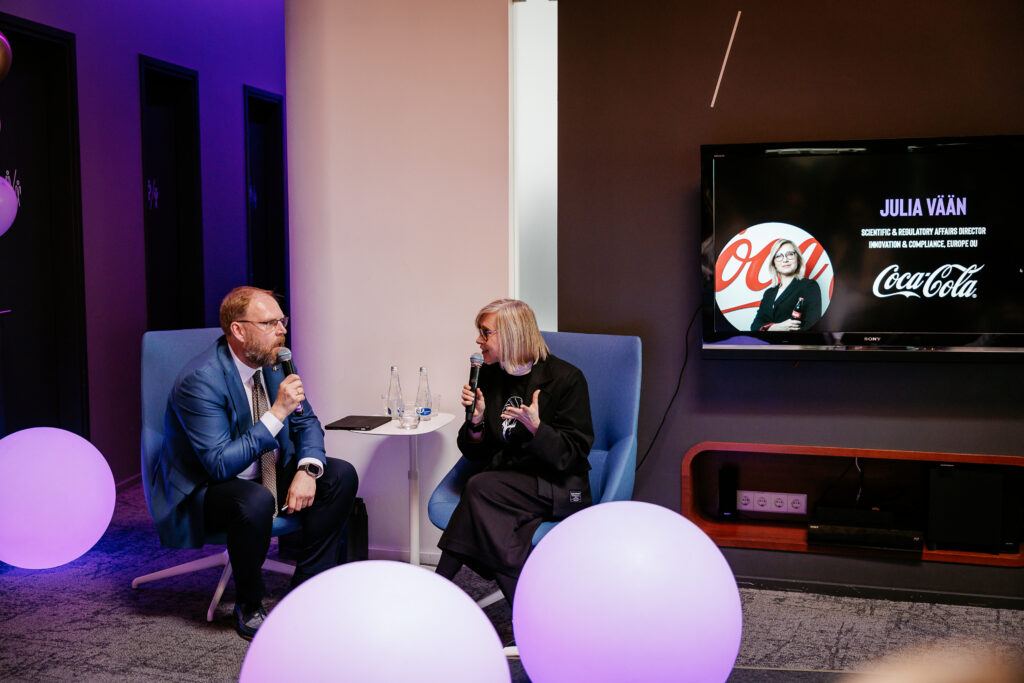
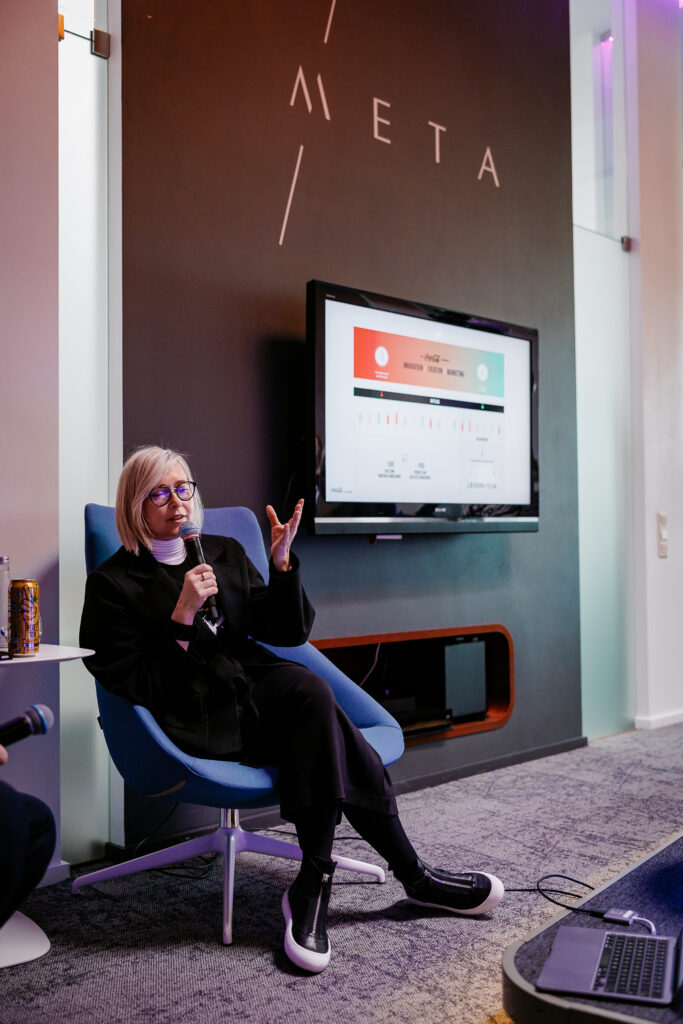
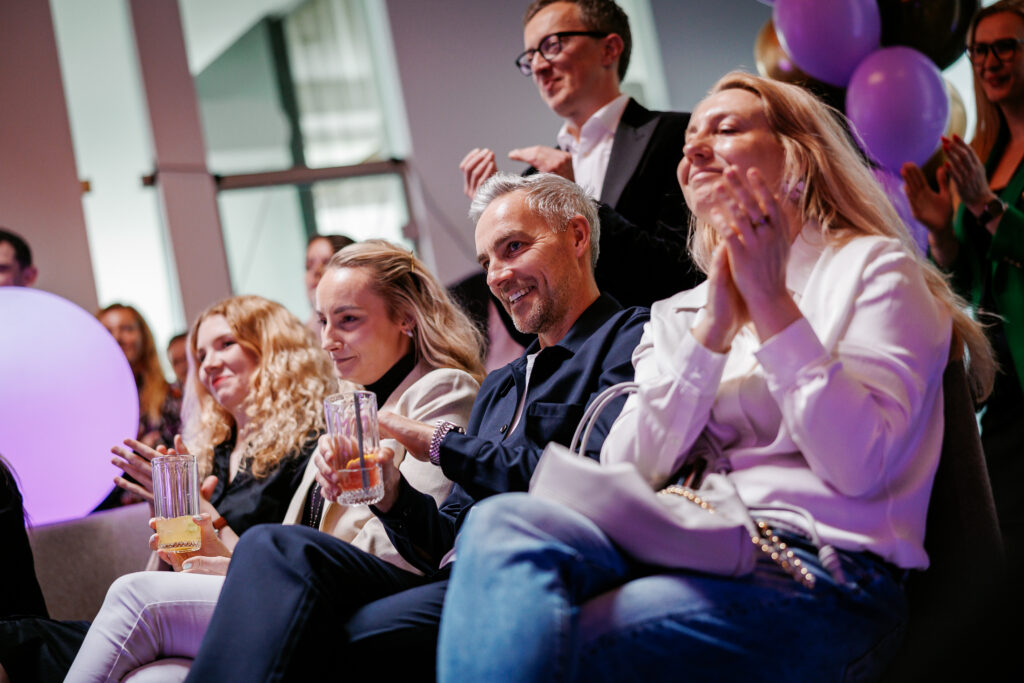
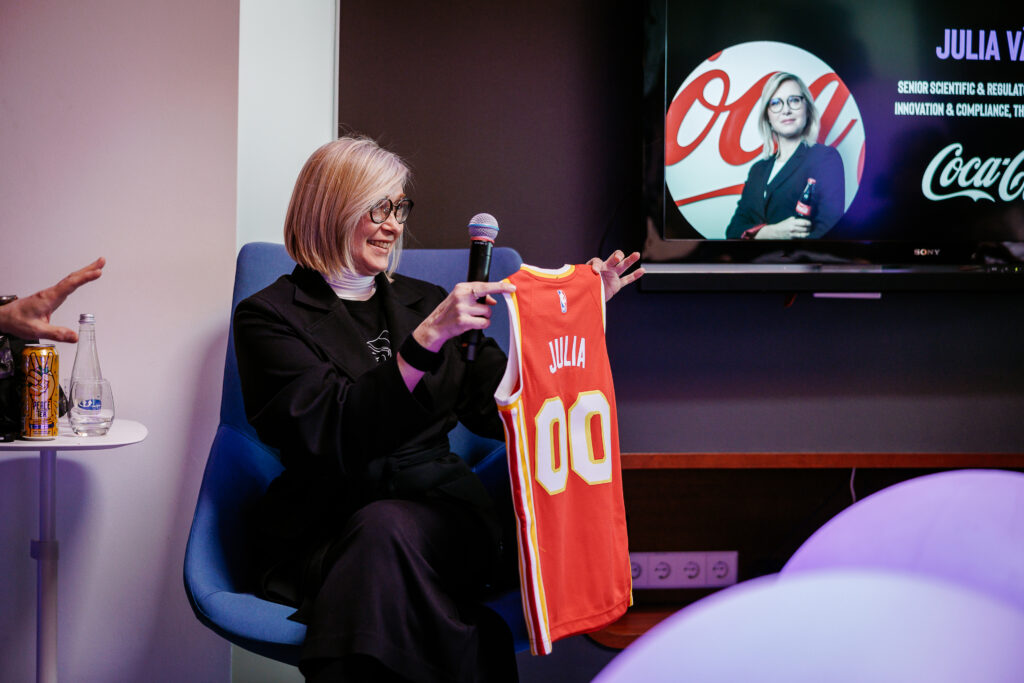

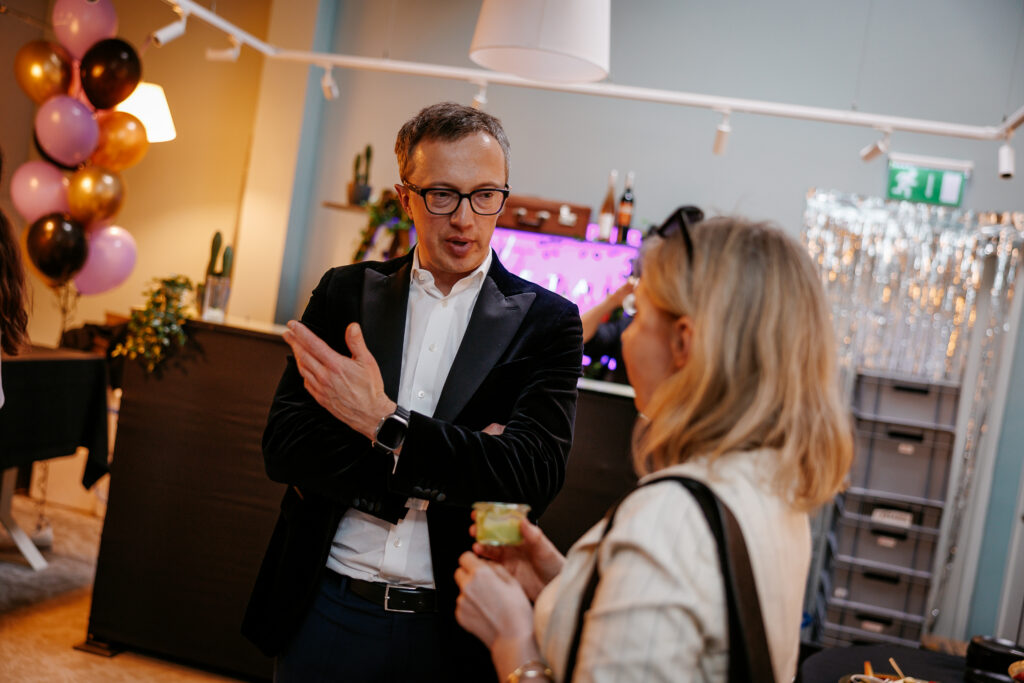
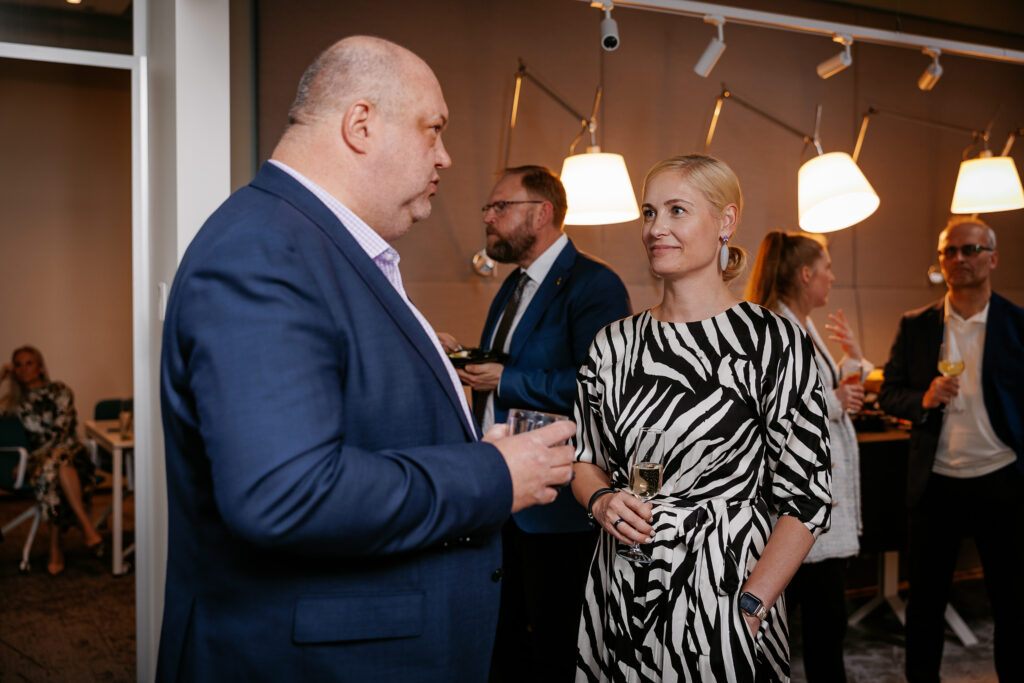
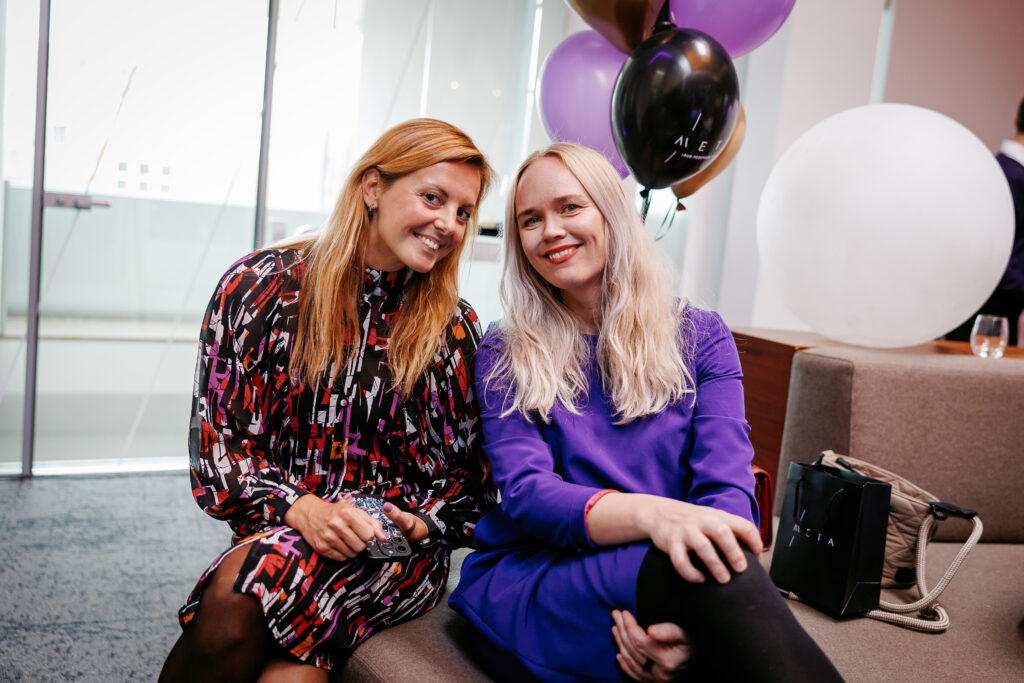





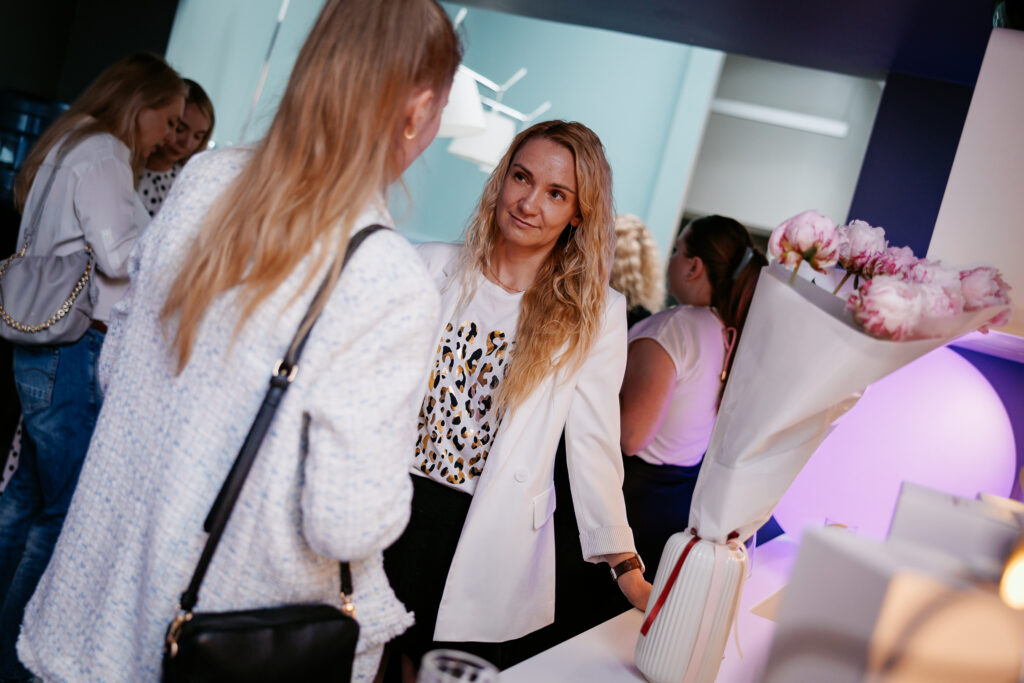

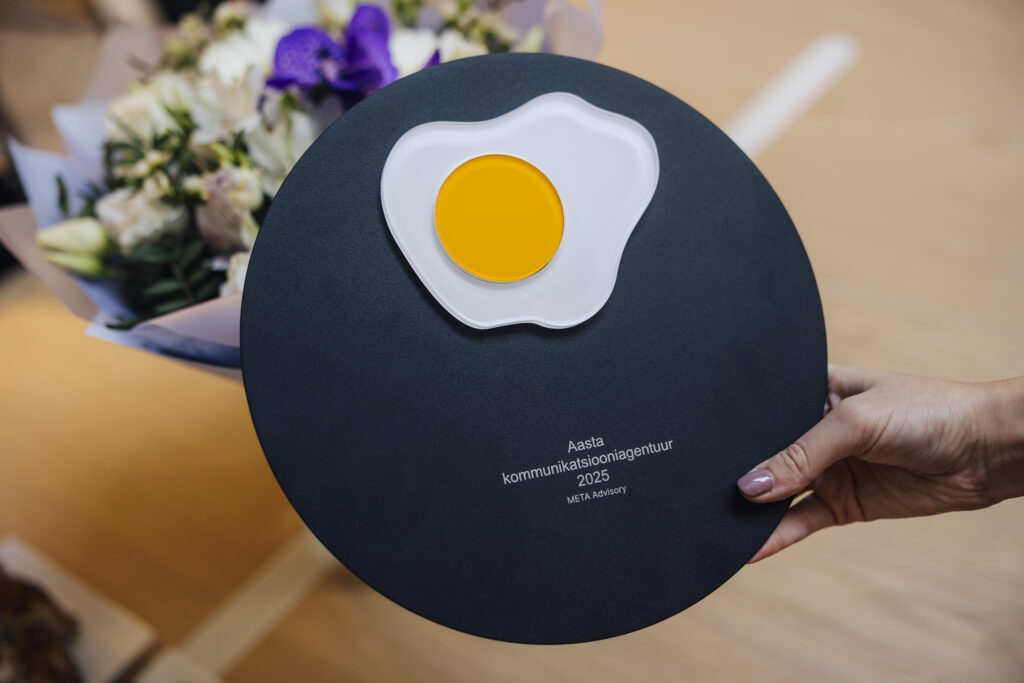
How do you choose a PR agency that supports your business?
Over the past 10 years, I have witnessed hundreds of different procurements and sales meetings from the sidelines, somewhere companies have been able to engage a strategic partner to support business success, others where they have recruited a handyman whose real value remains questionable. The difference between the first and the second outcome is always created by one overarching trait: how the process of engaging an agency is thought through and expectations are fixed.
Choosing a PR agency is more than finding someone to write press releases or send talking points to journalists. It’s about a long-term strategic partner who needs to be able to understand your business objectives, both long and short-term, and support them with their day-to-day activities. But how do you get to the kind of agency that will deliver results?
Map your marketing & PR needs
It should start with objectives. Before sitting down at the table with any agency, it is worth asking yourself two critical questions: “What results do I want to achieve by working with a PR agency?“ and “What does success look like for me?”. These are seemingly simple questions, but finding the correct answers can often be the difference between a company backed by an agency that will make a difference and someone just doing something to get something done.
Once the initial objectives are clear and the bigger vision is in place, it’s also worth considering what type of PR firm can help achieve the goals.
Map the market
The bigger the market, the more choices. The Estonian PR market is relatively small, but some agencies can offer diverse services.
There are those primarily known for their strong strategic approach and those more focused on traditional media relations or digital marketing. By understanding your needs, you can choose someone who can deliver what you really need.
The team’s size is also crucial in making the right choice. While an agency doesn’t need to have 10, 20 or 30 people, the size of the team is a key indicator of the range of skills and experience that will contribute to success. It is worth looking at companies’ websites to see if anyone has experience in a similar sector to your business and case studies of successful projects.
“It is worth understanding that PR is not universal. Strategies that work for a B2C-oriented retail brand may not work for a B2B-oriented technology company.”
It is worth understanding that PR is not universal. Strategies that work for a B2C-oriented retail brand may not work for a B2B-oriented technology company. Just as PR itself is not universal, neither are agencies. That’s why it’s important to find potential partners who understand the challenges and trends in your business sector and who have a network of journalists covering that sector.
Test the competence & ask for references
Once you’ve found agencies that, at least as described, could help your business meet its strategic objectives, it’s time to move on to the next step and start validating potential partners. To get a good overview of the agencies, send them an introductory email and see if they would be interested in bidding. Then, give your potential partners the same task and see how they do.
The latter could coincide with your strategic business objectives and test the capabilities you need from the agency daily. Be sure to also ask for references, as similar experience is generally the best teacher. During the validation phase, getting real insight into the team’s competencies and capabilities is essential.
As a company, sending experienced partners or team leaders to a sales meeting is of little use, but your own day-to-day partner will be an inexperienced young person who is still learning. It is important to include a clause in the initial invitation to tender that the same team that will later advise the company will be represented at the sales meeting.
Meet in person
As good as no offer is, the chemistry between the agency and the company must always be an essential consideration in the final selection. A good way to test the fit at a human level is to invite agencies one by one to submit a given assignment and, in the process, ensure that a good fit exists. Since the agency should ideally become part of your team, it is obvious that this team will perform much better if all its members share similar perceptions, values and attitudes.
“Agencies today no longer do “PR”. They help you position your business in the market, anticipate risks and support sales.”
In 2025, a PR agency should be more than just a hand-holding device for a communications manager. Agencies today no longer do “PR”. They help you position your business in the market, anticipate risks and support sales. So make wise choices and spend more rather than less time choosing an agency, because onboarding is inevitably a costly exercise.
Sponsorships in 2024: how to make them truly support business
The ongoing EOK (Estonian Olympic Committee) presidential elections seem to be once again centred around money — or rather, the lack thereof. However, if we look at larger sponsorship collaborations in sports, the picture seems different: Estonian companies have plenty of money. Unfortunately, while funds are allocated, collaboration opportunities are not maximised.
Imagine investing 15% of your marketing budget in a campaign but not measuring or adjusting the results along the way. It sounds unreasonable, right? Unfortunately, this is still quite common in sponsorship collaborations. The sad reality is that many are just “present.” The full potential of sponsorship is achieved when the brand not only displays its logo but engages the audience, creates value, and measures how the investment actually yields results.
The sad reality is that many are just “present.”
Collaboration with various events or individuals generally consists of three stages:
- Selection of collaboration projects and preliminary research.
- Development and implementation of a sponsorship activation strategy.
- Measuring effectiveness.
Who to collaborate with?
It is crucial to choose collaboration partners who share the company’s values and goals. Poor planning and expectation management often lead to unsuccessful collaborations. Here, the event or individual seeking sponsorship plays a significant role, as they must provide a clear value proposition and an overview of the target audience. Sometimes, even event organisers are unaware of their participants’ profiles and whom they are actually addressing.
Additionally, focus is essential. Just as we don’t trust influencers who collaborate with everyone, there’s little sympathy for companies that seem to support everything but offer nothing substantial. Focus is vital in sponsorships as well.
Just as we don’t trust influencers who collaborate with everyone, there’s little sympathy for companies that seem to support everything but offer nothing substantial.
The initiative must come from both sides
I have long been responsible for marketing various sporting events and communities (e.g., IRONMAN Tallinn and the Biathlon World Cup in Otepää), including managing sponsorship collaborations. Often, I found myself wanting to work with companies that might even give less money but were passionate about the cause. Unfortunately, 70% of the collaborations were more in the format of “you get cucumbers, I get money.” The primary output was limited to a few banners, logos in the competition guide, and a promotional video on social media.
The proposed list often had more topics, but unfortunately, these opportunities were frequently left untapped. This was because the company would have had to put in additional effort. The reasons varied but mainly revolved around a lack of commitment or time. It could also happen that the decision to support came from higher up, leaving the marketing manager to simply accept that their company was now a sponsor of a particular event or individual.
What value can sponsorship collaboration bring?
The brand collaboration aimed at customers:
- increasing brand awareness;
- positioning the brand among competitors and maintaining the brand image;
- developing the brand’s community;
- increase purchase intent and directly advertise products/services to the target audience.
A good example is the collaboration with Farmi during the Biathlon World Cup, where they aimed to reach a younger target group. They supported the construction of children’s tent at the supporter area, had different activities and provided it with all their new products therefore reaching to their needed audience.
Employer branding and internal communication:
- showing employees that the company values an active lifestyle;
- building the company’s image in the job market;
- involving employees in sponsorship collaborations;
- offering added value to both existing and potential employees.
Swedbank has shown significant benefits in sports projects, elevating its image as an attractive employer through its collaboration with the Tallinn Marathon, both internally and externally.
Developing partnerships:
- demonstrating commitment and enhancing the image among partners;
- different events’ VIP areas are excellent opportunities to host partner and client events.
It is proven that sponsors who invest in effective activation strategies for their sponsorships can achieve greater visibility, thereby increasing awareness of their sponsorships (Quester & Thompson 2001; Wakefield et al. 2007).
Community and dedicated fans
Fans care about brands that are deeply connected to local communities, not just during major moments. There is enormous potential at the local level that is currently untapped. For example, sports events often offer the opportunity to create branded emotional points through sponsorship. It’s as simple as setting up a few flags or banners, playing music, and gathering a crowd — no more is needed. The emotions participants get are invaluable. That feeling that someone is cheering them on and supporting them during the toughest moments of a marathon stays with them. If this is tied to a brand, there is a tendency to choose that brand’s products or services in the future.
At the IRONMAN event, these places were even offered for free because the organisers also wanted many people along the course and for participants to have valuable experiences. The company, in turn, can nicely display its brand.
In other words, sponsors need to make an effort to increase their visibility and make an impact. Just a banner is no longer enough; the company must genuinely show interest.
Sponsorship collaborations can be measured, too
Although very few do this. A survey by the market research agency MKTG revealed that just under 20% of surveyed companies’ sponsorship managers had developed a method to measure the return on investment (ROI) of their sponsorships. 73% of them stated that the main goal is “brand awareness,” and ROI was not the main focus of sponsorship. This trend indicates that while investments are increasing, many companies may not fully utilise their sponsorship opportunities.
Once again, collaboration with the event organiser is crucial for measuring effectiveness. Often, proactive communication with the organiser opens up various ways to further measure effectiveness. Naturally, it is impossible to quantify the entire collaboration, but saying it’s all just for brand spreading is simply lazy. Collaboration no longer involves placing logos on banners. As mentioned in the article, there are many ways to maximize collaboration. Even for direct advertising, solutions exist, starting with newsletters, which are among the most widely read emails (about 80-85% of participants usually read the content).In Estonia, sponsorship relationships are still in their infancy, whether it’s about supporting various events or athletes. They often depend on whether the marketing manager is passionate about leading projects. Good collaborations come from mutual initiative. Sponsorship is not charity but a bilateral strategic partnership!
Ann Hiiemaa: Success is preceded by years of failure
META Advisory partner and marcom team lead Ann Hiiemaa shared valuable tips earlier this year on how students can secure internships. Now, the conversation has expanded to cover broader topics such as the job market, personal branding, and the importance of courage in one’s career. The interview was originally published on the TULI portal.
I’ve had several experiences where I wanted to get a job at a cool agency, but they preferred people who had already worked at an agency before. Do you have any ideas on how to get your foot in the door?
Fortunately, many agencies today have internship programs. We have METAIQ, from which we recruit at least two strong interns each year. The easiest way to break into an agency is to demonstrate your capabilities and skills during the internship period.
Of course, many young people apply for internship programs today. Those who stand out in the application process are those who have made somewhat different choices in their lives—studying abroad, helping a friend’s company create social media content, building a personal brand on LinkedIn, or writing a blog, for example.
Those who step out of their comfort zone, differentiate themselves, and do something more than everyone else are the ones who stand out. Most importantly, it shows that the person has the ability to think creatively and to implement their ideas.
In marketing, there’s generally a fierce competition even among experienced professionals. How can a fresh and young person make themselves noticeable in such an environment?
Every generation has its strengths. At META Advisory, we’ve talked a lot about Generation Z and Alpha, and we’ve realized that if a representative of these generations can, for example, tell their story on LinkedIn or TikTok, or explain how to reach young people as a brand, it’s a huge added value.
Practical skills on how to engage peers and specific segments are certainly a significant advantage when applying for various marketing roles. As an employer, I understand that a young person can use certain digital platforms in a way that captivates their peers, and in turn, they can leverage their strengths.
In winter, you shared tips on our portal on how to secure an internship. Tell us, how did you get your first professional job, and did you have to work hard for it? Did your prior internship help?
My first professional internship was at Postimees’ sports department, where I also managed to get a job right away. I think I stood out with my persistence—if I didn’t get a response the first time, I wrote three more times.
I had previously written articles for a regional newspaper and thought I had practiced a lot, but when I went to the newsroom and wrote my first article, a colleague grabbed their head and exclaimed that the paper was just a pile of bricks that needed to be built into a house.
At first, the initial experiences and criticism seem very scary. Looking back, you can’t replace them with anything, and the prerequisite for future successes is that you’ve learned enough from your failures.
No matter how talented you are, none of us can write a perfect article or communication strategy the first time. It takes years of failures and tolerating imperfections before successes start coming.
I’ve seen on social media how young people discuss that it’s difficult to find a job in their field. I’ve even written to some companies asking if they could offer me an internship or job shadowing opportunity to gain experience. Could such “offering yourself” create a negative image instead?
Definitely not. Applying for a job should be seen as a win-win situation. Before sending your CV, you should ask yourself, what benefit could this particular company gain from hiring me? How could I support the company, for example, with digital marketing, reaching Generation Z, influencer marketing, or something else? Talented people who can see opportunities are likely welcomed in any company.
It’s important to think through the content of the letter and approach it strategically. Just sending a CV and cold calling probably won’t bring results. The timing is also worth considering—in terms of differentiation, I recommend writing to agencies at the beginning of the year. In the spring and summer, when everyone starts looking for internships and jobs, inboxes might be flooded with such letters. It’s good to get ahead of that train.
Today, you don’t always have to send a CV; there are other channels to reach employers, such as LinkedIn, where you can stand out with strong content and get to interviews even before the competition is announced.
I wanted to talk a bit more about personal branding. As an employer, do you look only at a young person’s LinkedIn profile before an interview, or do other social media accounts sometimes catch your eye? Can you give some tips or keywords on how to build a memorable and interesting personal brand that is attractive to employers?
LinkedIn is the main platform, but sometimes I’ve looked at other social media accounts as well. A young person is still building their network, but when hiring someone who will also handle visual execution in addition to messaging, an Instagram profile can often show their style and skills. Even if a person doesn’t treat their personal social media account as equally important as their work, it still gives us an indication, for example, of their visual vision.
Often, personal branding is thought to be something artificial that needs to be built and created on social media channels. It’s about who you really are, what your strengths are, and what you want to convey. But you need to find a balance between authenticity and, to some extent, common sense. If you worked as a waiter in a restaurant over the summer and publicly criticize your employer or, worse, the customers on your public account—no matter how good your technical skills are, why would anyone want you on their team?
When creating a public image—your personal brand—a simple barrier often arises. It’s the fear of putting yourself out there. We always think, who am I to say anything, and what will others think? I’ve noticed this especially among young women, who often experience imposter syndrome.
I’ve suffered from it too, and it wasn’t until my thirties that I started to come out of it. Before that, I felt paralyzing fear of speaking up in meetings or expressing my opinion out loud, but by taking small steps every day, it’s possible to overcome it. However, it’s a rather long and painful process.
I think quite a few people might have recognized themselves in your story just now. Could you share with young people what the first steps might be to reduce their fears?
I believe that experience plays a crucial role. After finishing my master’s degree in Denmark, I sent out over a hundred CVs to get a job somewhere. Then I went to so many job interviews that I eventually started to genuinely enjoy them.
At first, I was shaking like a leaf in interviews, but I quickly realized that generally, 99% of the questions in job interviews are the same, which gives you the opportunity to do your homework and feel more confident. A very simple secret weapon for overcoming insecurity is preparation. The more thoroughly you’ve prepared, the more confident you’ll feel.
Is it possible to overdo it with experience in a CV? As a young person, it feels like every little project or experience should be included to show what you’ve done, but can it be too much?
I’ve generally noticed that people include their summer jobs from their youth in their CVs. If you’re applying for a job at an agency, for example, as a digital marketing specialist, it’s not as important to me that you worked as a waiter in a café when you were 14. Instead, you can highlight any volunteer work experience when applying. The fact that you’ve been a member of an organization or done more than your peers is a very good sign.
The CV should be neat, structured, and in correct language, but even more important is the person who comes to interview with me—their energy and attitude. Are they seemingly positive, or do I sense that they would rather be anywhere else but where they are at the moment?
The best thing is to be yourself and as honest and transparent as possible, even about your mistakes. It’s very refreshing. The worst thing is to talk in a job interview about who you would like to be, rather than who you really are. The same goes for the employer—it’s important for both sides to be honest and transparent.
More and more, it’s being said that the traditional education path of primary school-high school-bachelor’s degree may no longer be the ideal that’s needed in every field on the job market. How is it in marketing? Can continuous self-education and practical experience be an equal opponent to a university degree?
An academic degree shows the employer that the person has been able to start something and also finish it. They have enough perseverance and ambition to achieve their goals. I personally value highly those who have done a year abroad or studied longer at a foreign university. It indicates that the person dares to step out of their comfort zone and stand out. Of course, it’s not financially possible for everyone, but it does give some indication.
At the same time, only having an academic degree may no longer give a significant advantage on the job market. Most of the candidates who apply to us have a university degree from strong universities, and it’s not a differentiating factor, but rather basic hygiene.
What’s becoming increasingly important is adaptability, curiosity, and a constant desire to grow, because the world is changing so fast. That’s why companies need to have representatives from multiple generations working together to bring the strengths of different generations to the table and to reach all target groups.
Is there something you, as an employer, look for and expect in a good employee?
In a communication agency where strong writing skills are crucial, we see more and more that young people have difficulty writing in Estonian. Here, one downside of studying at a foreign university comes to light. Young people express themselves excellently in English, but writing in beautiful Estonian often poses challenges.
Work at an agency can often be quite general, but it’s increasingly important that people have specific interests that help support the sales of different products and services. Individuals who are curious, stay updated on trends, can make connections, and have strong critical thinking skills are likely to be highly valued at any agency.
I know people in marketing who can be described as “jack-of-all-trades”—they do everything that needs to be done. At the same time, I’ve also heard recommendations to choose a specific area and stick to it. What do you think—is there a shortage of young specialists, or do you expect more flexibility?
It’s a difficult question because different positions naturally have different requirements. Personally, I look for analytical skills and critical thinking in an employee. I want someone who can see details and draw conclusions and connections from them. Everything else can be learned, and you can develop your specialty over time, but for someone who lacks critical thinking skills, working in an agency can be challenging.
What are your final thoughts and recommendations for job seekers?
I currently have several friends and acquaintances who are making a career change, and they also receive very few responses from potential employers. It can sometimes feel like a matter of luck. Your competing candidate might simply have a stronger profile and more experience at that moment, but you should never take this personally.
I recommend gaining experience through pro bono projects, continuing to learn, grow, read, and build your network. Ultimately, it’s important to stand out, differentiate yourself, and make connections. I also suggest applying annually to the META IQ program, which will start accepting new candidates in March 2025.
Back in 2013, while I was still a student, I went all out and sent over a hundred CVs in hopes of snagging my first professional gig in marketing. Sadly, most of those applications seemed to vanish into thin air. And when I did manage to get a response, it was usually along the lines of: “Thanks for applying, but we’re seeking candidates with field experience.”
Now, having been on the other side of the hiring table and having brought on board several bright young minds, I’ve got some solid advice for those of you aiming to land your inaugural job.
1. Show your willingness to step out of your comfort zone
Let’s face it: the CVs of young students often look strikingly similar: same alma maters, same majors, same internships. To catch the eye of a recruiter, you need to stand out. Whether it’s an Erasmus exchange time, participation in a specialized program like BAFF, or earning a degree from a foreign university, these experiences can set you apart.
Why do I value these experiences as an employer? They demonstrate your willingness to take risks, push boundaries, and adapt to new environments. In a world where change is constant, adaptability is a prized trait.
Granted, not everyone can jet off to study abroad. In such cases, involvement in youth organizations or projects like Solaride can be excellent alternatives.
2. Leverage opportunities to build your personal brand
In today’s digital era, where anyone can carve out their space online and showcase their talents, having a personal brand is crucial for job seekers. Do you have a lively LinkedIn profile? Do you enjoy creating content on platforms like Instagram or TikTok? These channels allow young professionals to showcase their storytelling skills and visual creativity, giving them an edge in the job market.
3. Pay Attention to detail in your applications
Typos in your cover letter, submitting an English CV for a job in Estonia, or a poorly written introduction— these seemingly minor errors can be the kiss of death when dozens of applicants are vying for the same position. Especially in fields like communications, where clear and concise expression is paramount, attention to detail is key.
4. Research your potential employer
What projects has the company undertaken in the past? What are their standout achievements? How is the communications landscape evolving? Staying informed about the industry and the organization you’re applying to demonstrates your genuine interest and preparedness for the role.
5. Hobbies make you attractive
Work is important, no doubt. But beyond a decent paycheck and a fulfilling career, what most people seek in a job are great colleagues. Employers appreciate individuals with diverse interests and hobbies, as they often bring fresh perspectives and enrich workplace dynamics.
Sure, previous experience is desirable. It can make the onboarding process smoother. However, individuals without extensive professional backgrounds often bring boundless energy and a strong willingness to learn, making them valuable assets in the long run.
Our META IQ internship program is now open for applications starting in March. We offer paid traineeships because we value the time and efforts of our young participants. Moreover, the best trainees are assured of job opportunities within our organization.
The Metaverse: A New Frontier for PR and Marketing
The metaverse is a term used to describe a virtual universe, where individuals can interact with each other and digital objects in real time. It’s a simulation of the physical world but in a virtual environment. The metaverse has been a popular concept in science fiction for decades, but with advancements in technology, it is becoming a reality.

The metaverse has various applications in entertainment, education, commerce, and social interaction. In the world of PR and marketing, the metaverse presents a unique opportunity for brands to engage with their audience in a new and innovative way.
Using the Metaverse for PR and Marketing
- Virtual Product Launches: Product launches are a crucial aspect of marketing, and the metaverse provides a new platform to showcase products in a virtual environment. Brands can create immersive experiences that allow customers to interact with products and see how they work. This approach can generate buzz and excitement around a product launch, while also providing customers with an interactive and memorable experience.
- Virtual Event Hosting: The metaverse offers a new way to host events, including trade shows, conferences, and product demonstrations. Brands can create virtual event spaces that can be accessed by attendees from anywhere in the world. This can significantly reduce the cost and carbon footprint associated with physical events, while also providing a more inclusive and accessible experience.
- Interactive Advertising: The metaverse provides an opportunity for brands to create interactive and engaging advertisements. Advertisers can create virtual environments that allow customers to interact with products, learn about services, and experience the brand in a unique way. This approach to advertising can drive engagement and increase brand awareness.
- Influencer Marketing: The metaverse also provides a platform for influencer marketing. Influencers can create virtual environments where they can interact with their followers, showcase products, and provide demonstrations. This can provide brands with a new way to reach audiences and increase their visibility.
- Driving Sales: The metaverse can also be used to drive sales and increase revenue. Virtual stores and shopping experiences can be created, giving customers the ability to try on products and make purchases in a virtual environment. This can be especially useful for companies selling products that are difficult to visualize, such as furniture or home décor.
Overall, The metaverse presents a unique opportunity for brands to engage with their audience in a new and innovative way. By leveraging the power of virtual reality, brands can create interactive experiences that generate buzz, increase brand awareness, and drive engagement.
As the metaverse continues to evolve, it will likely play a significant role in shaping the future of PR and marketing. But the easiest first step you could already make today is creating your avatar with Ready Player Me here – https://readyplayer.me/avatar.
This article is 80% written by ChatGPT.

NB! Microsoft on loobunud Internet Exploreri arendamisest ning sellele uuenduste tegemisest ja ei soovita antud internetibrauserit turvanõrkuste tõttu kasutada. Internet Explorer ei toeta enam uusi võrgustandardeid ning antud veebilahendus ei tööta siinses brauseris korrektselt.
Palun lae alla mõni moodne veebilehitseja:
The website uses cookies. Cookies are required for your convenience and web statistics. By continuing to use the website, you agree to the terms of the privacy of cookies! You can see the terms of the privacy policy in here.







